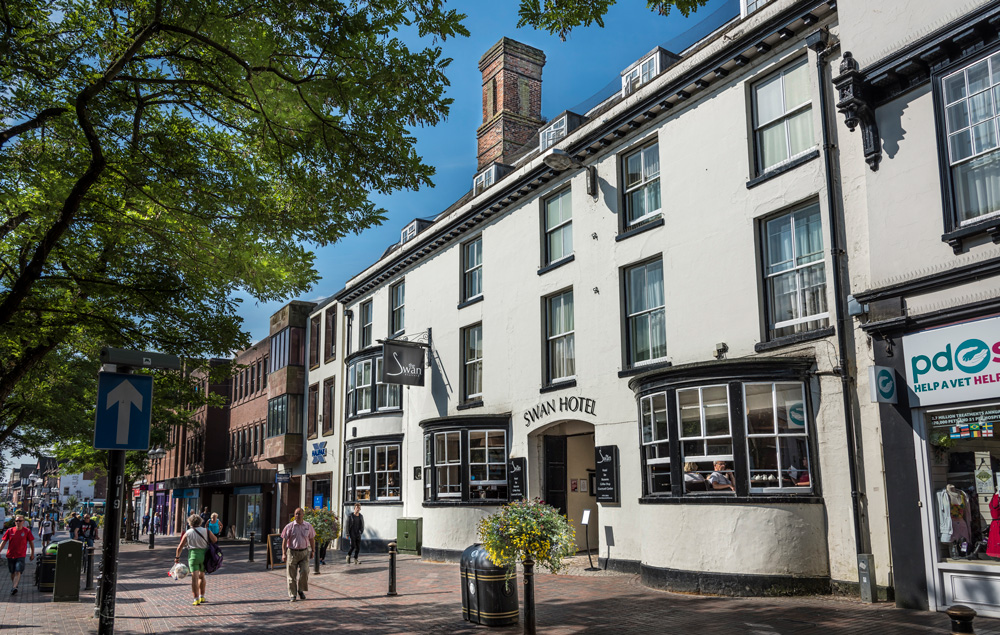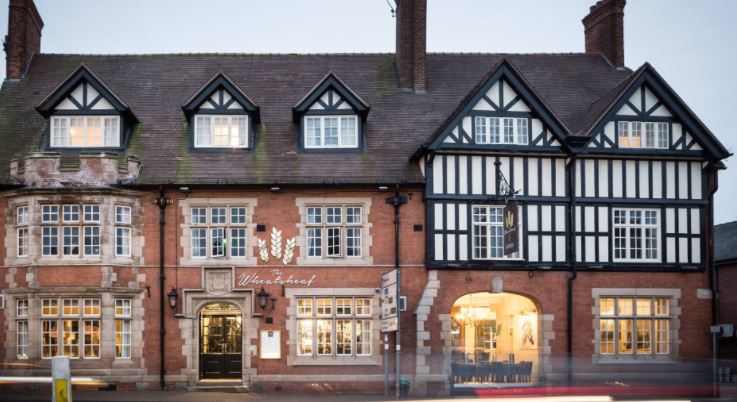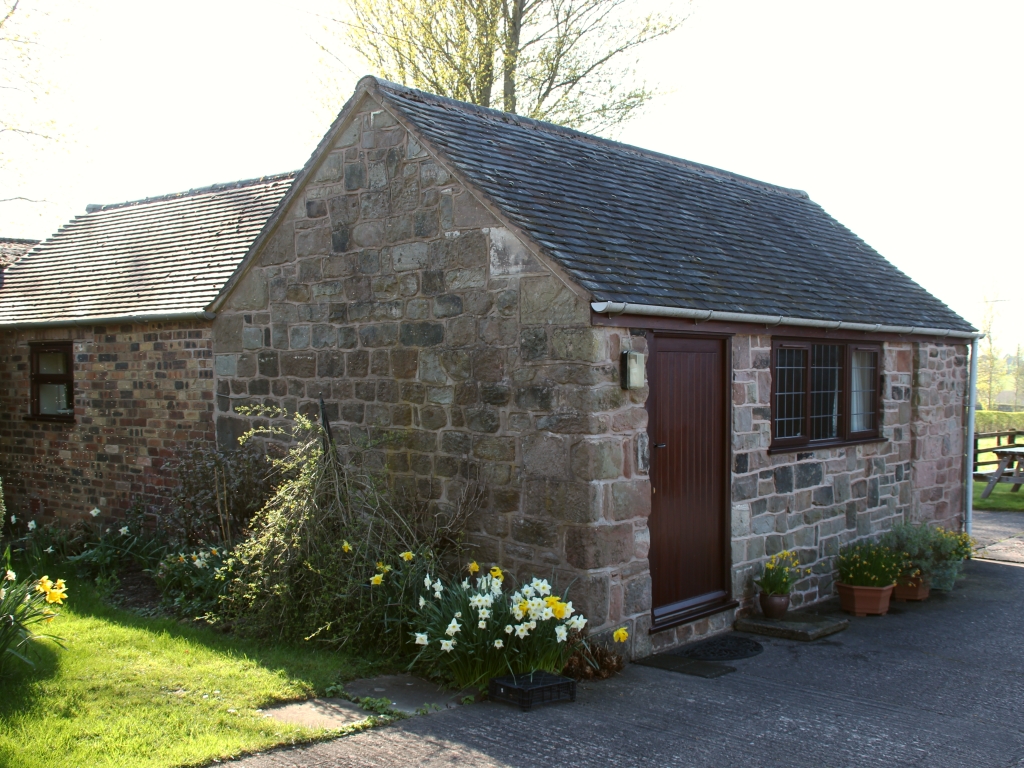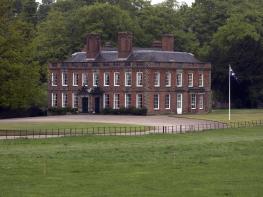Field House is a family home standing in secluded, pretty gardens close to the town centre. The…
Hanchurch Hills

Discovering the legacy of Hanchurch’s watery heritage
7 miles (11.3kms)
About the walk
The walk begins in Swynnerton Old Park, near the first of this walk's water towers. Of course, it's not just coincidence that there are so many water towers in the area; the sandstone strata of Meecebrook Valley, formed during the Triassic period, is capable of providing 1.5 million gallons (7 million litres) of clean water a day.
Satisfying the demand for water
At the end of the 19th century, in response to an increase in demand for high-quality water, thanks in part to the new fashion for indoor baths, the Staffordshire Potteries Water Board built the Hatton Water Works, a project which took the best part of 20 years to complete. Water was pumped directly to Hanchurch Reservoir (now Hanchurch Pools), which then supplied water to Newcastle, Stoke and the Trent Valley.
Restored tower
Today, water is still pumped at Hatton, but electricity has now replaced steam and the Grade II-listed, yellow- and red-brick buildings have been converted into various luxury apartments. The carefully restored water tower just north of Swynnerton, however, gives an idea of quite how impressive these Italianate-style buildings must once have been, with their red-brick columns, circular windows and triumphal archways superimposed on warm, yellow-brick facades. The Swynnerton tower itself has been ingeniously rebuilt as a house, with its vast windows and spiral staircase in the middle, up to the first floor.
Historic buildings
Swynnerton, meanwhile, has more than its fair share of historic buildings for a village so small. The oldest of these is 13th-century St Mary's Church. Apart from the statue of Christ (see What to See), the feature of most interest is undoubtedly the simple Norman doorway, which nonetheless has a detailed beakhead moulding. Over the road is a Roman Catholic church dedicated to Our Lady of the Assumption and built from local stone by Gilbert Blount, who tried to imbue his designs with a distinctly Gothic feel.
The chapel itself is attached to Swynnerton Hall which, though not obvious from the village, dominates the Swynnerton skyline from the south. The hall was built in 1725 to replace an earlier manor house demolished by Cromwell in the Civil War. Its owner, Sir John Fitzherbert, supported the Royalist cause. His grandson Basil built the hall seen today.
Walk directions
From the car park take the left fork along a gravel track, which is Harley Thorn Lane. Then veer left again at the next fork past a derelict water tower and reservoir on your right. After 650yds (594m) go through a gate and continue ahead along the metalled road.
Just before the A519 go right up a gravel track and, shortly after, at a hairpin in another road, head left, going downhill. At the next fork go right. At the road junction turn left and follow the road until you come to a fork just after The Old Cottage on your right.
Go right here and keep following the main path, ignoring the public footpath signs to the left. Where the obvious gravel bridleway veers left, head straight on and up into the woods. At the top of the woods, carry straight on, following the track to the A51.
Turn right, then take the first left, following the minor road towards Swynnerton. Just past the Fitzherbert Arms on the right, turn right along Early Lane. At the end of the road, keep going straight along a signed footpath. At the far end, go straight on, in the same direction, across the middle of a wide field. Continue on this public footpath through three more fields to the A519.
Cross the road with care and then carry on by going left in the next field, beside the hedge. Continue to the end of the field, go through some trees and then right to the stile and a gravel drive.
Turn right past the kennels and, at Lower Hatton Stables, turn right along the road to the A51. Take care crossing this road, heading right then taking the first left, past Lower Hatton Pumping Station, now private residences. Follow this road to Upper Hatton and then carry on straight along Common Lane all the way back to Swynnerton Old Park.
At Dog Lane turn right and, after 400yds (366m), just beyond a house, turn right up a woodland path. Head left at the fork immediately after the start of the track. When you reach a clearing with a car park and picnic site, make for the left of the water tower, continuing along the track back to the start.
Additional information
Gravel tracks, field paths and roads
Woodland, farmland and village
Off-lead opportunities in woods and on fenced tracks
OS Explorer 243 Market Drayton
Hanchurch Hills Picnic Place car park
None on route
WALKING IN SAFETY
Read our tips to look after yourself and the environment when following this walk.
Find out more
Also in the area
About the area
Discover Staffordshire
It was Staffordshire that bore the brunt of the largest non-nuclear explosion of World War II, when a munitions dump at RAF Fauld went up in 1944. It was also the county’s regiment that once boasted within its ranks the most decorated NCO of World War I, in the person of William Coltman (1891-1974). Going back a little further, George Handel penned his world-famous masterpiece The Messiah on Staffordshire soil. During another chapter of Staffordshire history, the county was home to the first canals and the first factory in Britain, and it had front-row seats for the drama surrounding one of the most notorious murder trials of the 19th century, that of Doctor William Palmer.
In outline, Staffordshire looks not unlike the profile of a man giving Leicestershire a big kiss. The man’s forehead is arguably the best region for hillwalking, as it comprises a significant chunk of the Peak District. This area is characterised by lofty moors, deep dales and tremendous views of both. Further south are the six sprawling towns that make up Stoke-on-Trent, which historically have had such an impact on Staffordshire’s fortunes, not to mention its culture and countryside. This is pottery country, formerly at the forefront of the Industrial Revolution and the driving force behind a network of canals that still criss-cross the county.
Nearby stays
Restaurants and Pubs
Nearby experiences
Recommended things to do
Why choose Rated Trips?
Your trusted guide to rated places across the UK
The best coverage
Discover more than 15,000 professionally rated places to stay, eat and visit from across the UK and Ireland.
Quality assured
Choose a place to stay safe in the knowledge that it has been expertly assessed by trained assessors.
Plan your next trip
Search by location or the type of place you're visiting to find your next ideal holiday experience.
Travel inspiration
Read our articles, city guides and recommended things to do for inspiration. We're here to help you explore the UK.













